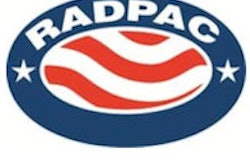LAS VEGAS - It's true that teaching a person how to fish -- rather than catching a fish and delivering it to him or her grilled and in time for lunch -- is a better long-term solution to self-sufficiency. The same may be true for educating the government about radiology and the specialty's importance in the healthcare landscape, according to the American College of Radiology (ACR).
At this week's Radiology Business Management Association (RBMA) meeting, Maurine Spillman-Dennis, senior director of governmental and economic advocacy for the Reston, VA-based group, and colleague Ted Burnes, director of RADPAC, the ACR's political action committee, presented the college's efforts to educate Capitol Hill about radiology, and, in so doing, slow the budget-slashing experiences that radiology has suffered over the past three years.
Spillman-Dennis and Burnes offered updates on a raft of legislative and regulatory issues, including the State Children's Health Insurance Program (SCHIP) Extension Act of 2007, the Medicare Physician Fee Schedule (MPFS), and changes to the Hospital Outpatient Prospective Payment System (HOPPS).
"We've got to be the squeaky wheel," Burnes said. "If we don't talk to Congress (about radiology services), we won't get what we need. We need to help lawmakers understand why the things that are important to radiology are important to healthcare as a whole."
Making sense of Medicare changes
Congress passed the Medicare, Medicaid, and SCHIP Extension Act of 2007 late last year, and President Bush signed it in December. The extension is in place until July 1, 2008, and provides:
- A 0.5% increase in the conversion factor from January 1 to June 30, 2008
- A freeze at 1.0 of the geographic practice cost indices (GPCIs) floor for physician work through June
- An additional 1.5% bonus for the Physician Quality Reporting Initiative (PQRI) for another year
In January, the Centers for Medicare and Medicaid Services (CMS) released notice of the new MPFS, which includes five parts that affect reimbursement in 2008:
Budget-neutral effects of the third fifth-year review: Medicare again chose to apply an 11.9% adjuster for a 32% increase in physician work for anesthesia codes; the adjustment is made by the Medicare payor in its electronic claim system and the calculated lower rate is paid back to the radiologist.
New practice expense methodology and data: The agency initiated a four-year phase-in of new methodology (2007 to 2010). This year will be split 50% and 50%.
Multiple-procedural reduction of contiguous body areas (CT, MR, and US): ACR has demonstrated that hospital costs already reflect the economies of multiple procedures performed in same session; that these economies vary under CT, MR, and US; and that they don't add up to 50% under the MPFS, Spillman-Dennis said. "The ACR will continue to drive home its message that further cuts are inappropriate within the HOPPS and MPFS methodologies," she said.
Implementation of rules set by the Deficit Reduction Act (DRA) of 2005 that establish reimbursement levels at either the lower of the HOPPS or the imaging technical component rate under MPFS
Changes to the conversion factor
Spillman-Dennis cautioned practices to consider that the impact of these legislative and regulatory changes isn't "one size fits all." For example, hospital-based radiologists are not affected by the DRA, but they are affected by further five-year review budget-neutral cuts and a decrease in practice expense payments, while imaging centers and office-based practices are affected by practice expense methodology, the DRA, and multiple-procedural reduction.
MPFS, self-referral, and HOPPS
CMS' MPFS proposed rule for 2008 includes several proposals to tighten rules on markup, including separating the professional and technical components; not paying for studies where physicians receive financial benefit, such as per-click arrangements and shared space; and not paying for studies done under lease arrangements by independent diagnostic testing facilities (IDTFs). Most antimarkup provisions have been delayed until 2009.
As for the in-office ancillary loophole, CMS has asked for more comments, Spillman-Dennis said.
"We've made comment to CMS that high-end studies like CT, MR, and PET were never intended to be part of the in-office provision and should be banned," she said. "CMS will propose specific changes to this exception loophole in a future proposed rule with comment period."
The agency also has proposed a dramatic change to HOPPS, saying that it will package the following categories of radiology services:
- Imaging guidance
- Radiology supervision and interpretation codes
- 3D reconstruction
- Contrast media
- Diagnostic pharmaceuticals
- Intraoperative procedures
- Observation services
"The phrase of the day is 'episodes of care,' " Spillman-Dennis said. "But no one (at CMS) is talking about what kind of impact packaging will have. We've testified that it's a bad idea."
Radical advocacy
In 2007, RADPAC contributed $792,000 to federal candidates and attended more than 440 events, Burnes said. He asked RBMA attendees to invite lawmakers to their facilities and to create petitions that can be used to show Congress that patients are also concerned about radiology cuts.
ACR's advocacy work is part of an effort to "teach Congress how to fish" -- that is, clarify legislators' understanding of just how important radiology is to healthcare in the U.S.
"The perception on Capitol Hill of radiologists is that they're white, male, between the ages of 40 and 60, and carrying two mortgages," Burnes said. "We need to change that perception so that when lawmakers think of radiology, they think of how crucial (radiology) is to patient care first."
By Kate Madden Yee
AuntMinnie.com staff writer
May 7, 2008
Related Reading
CMS and physician self-referral: More bark than bite? April 14, 2008
New CMS rules alter practices in independent imaging centers, April 8, 2008
CMS delays in-office self-referral decision with new MPFS rule, November 7, 2007
CMS publishes 2008 physician payment rule, November 4, 2007
New CMS rules could add to radiology's reimbursement woes, August 1, 2007
Copyright © 2008 AuntMinnie.com



















